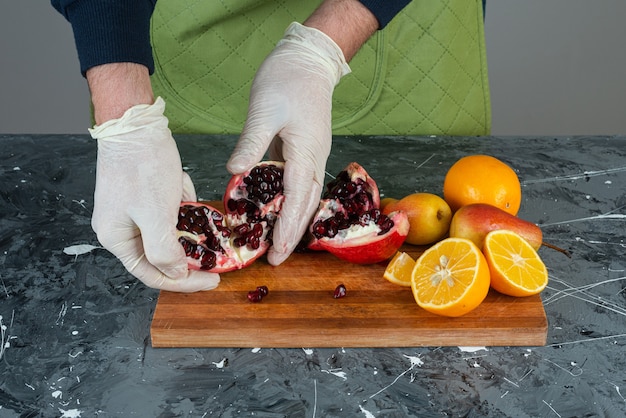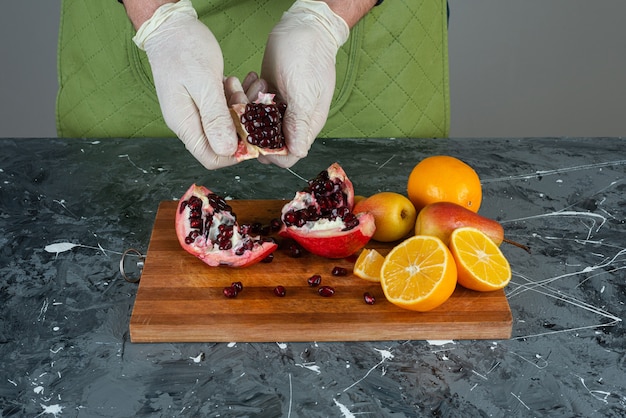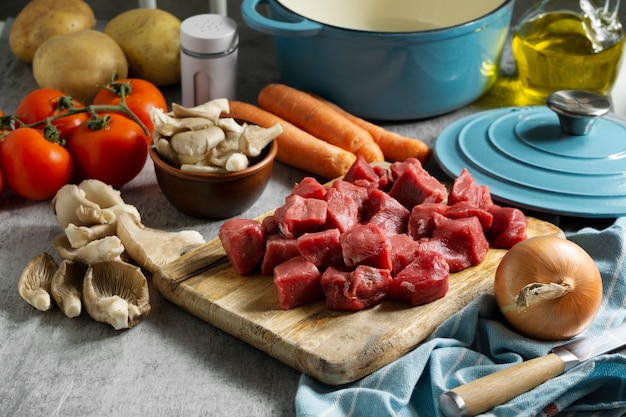Let's talk marrow bones! Now, I know what you might be thinking: "Marrow bones? What's that all about?" Well, trust me, once you get your hands on these little beauties, you'll be singing their praises. They're not just a trendy Instagram-worthy food, they're a real culinary treasure, packed with flavour and a whole heap of nutritional goodness.
Get ready for a deep dive into the world of marrow bone cooking. We'll go from the basics to advanced techniques, uncovering the secrets to unlocking that rich, deep, and oh-so-satisfying marrow flavour. I'll share my own experiences, tips, and favourite recipes, making this your ultimate guide to creating delicious, nutritious meals from these humble bones.
Part 1: Unlocking the Magic: Understanding Marrow Bones

What Are Marrow Bones?
Marrow bones, in simple terms, are the long bones from beef, lamb, or veal that have been cut open to reveal the marrow inside. This marrow is a soft, fatty, and incredibly flavourful substance, packed with nutrients. Now, you might be wondering, "Why would I eat bones?" And I hear you. But I promise, this isn't your average bone-in-soup scenario. The marrow is the star of the show, and it's what makes these bones so special.
The nutritional powerhouse: Benefits of Marrow Bones
I'm not one for pushing health fads, but marrow bones are a genuine nutritional powerhouse. They're a rich source of:
- Bone Broth: Marrow bones are a key ingredient in bone broth, which is packed with collagen, gelatin, and essential minerals like calcium, phosphorus, magnesium, and potassium. These elements contribute to healthy joints, strong bones, and glowing skin.
- Essential Fatty Acids: Marrow is a good source of omega-3 fatty acids, which are important for brain health, heart health, and reducing inflammation.
- Vitamins and Minerals: Marrow bones are rich in calcium, phosphorus, magnesium, and Vitamins A, B12, and K2. Vitamin A is essential for healthy vision and skin, B12 supports energy production, and Vitamin K2 aids in calcium absorption and bone health.
- Amino Acids: Marrow is a good source of glycine, proline, and hydroxyproline, which are important for building and repairing tissues, promoting gut health, and improving sleep quality.
So, you see? These humble bones are actually packed with good stuff. It's like nature's little health bomb!
Part 2: Finding the Right Marrow Bones

Choosing Your Bones: A Butcher's Guide
Now, the key to a great marrow bone dish lies in getting the right bones. It’s a bit like choosing the perfect cut of meat, you want to pick wisely.
Here’s the lowdown on choosing the right marrow bones:
- Beef Bones: These are your classic marrow bone choice. Beef bones are often larger, with a thicker layer of marrow. You can find them at most butchers or in the meat section of your local supermarket. Look for "marrow bones" specifically, or ask your butcher to recommend the best ones for cooking.
- Lamb Bones: Lamb bones tend to be smaller and have a more delicate flavour. They’re a great option for a lighter, more delicate dish.
- Veal Bones: Veal bones are a bit more expensive, but their flavour is exquisite. They're perfect for creating rich, creamy sauces.
- Freshness: Always check the bones for freshness. They should be firm, free of discoloration, and smell pleasant. Avoid any bones that are slimy or have a strong, unpleasant odour.
- Ask Your Butcher: Don’t be afraid to ask your butcher for recommendations. They are the experts and can guide you on the best bones for your specific needs.
Getting Your Bones Ready for Cooking
Once you've got your bones, you need to prepare them for cooking. Think of this as giving your bones a spa treatment before you get started.
- Cleaning the Bones: It's essential to clean the bones thoroughly. Rinse them under cold water, scrubbing away any dirt or debris. If the bones are very dirty, you can soak them in cold water for a few hours, changing the water a couple of times to ensure all the impurities are removed.
- Crack the Bones: Cracking the bones open allows the marrow to release its flavour more easily. You can do this with a meat cleaver or a heavy knife. Be careful, it can get messy! If you're feeling intimidated, you can ask your butcher to crack them for you.
- Roasting the Bones: Roasting the bones before cooking gives them a fantastic deep flavour. You can simply roast them in the oven at 400 degrees Fahrenheit for about 30 minutes. This roasting process helps to caramelize the bones, adding a layer of deliciousness to your final dish.
Now your bones are ready to unleash their flavour! You're one step closer to a delicious meal.
Part 3: Cooking with Marrow Bones: Simple and Sophisticated Dishes

The Classic Bone Broth
Now we're getting to the heart of things – the cooking! The first and probably most common way to use marrow bones is to make bone broth. It’s truly a culinary workhorse. You can use this broth in so many ways, from soups and stews to sauces and gravies.
Here’s my classic bone broth recipe, which you can adapt to your tastes:
Ingredients
- 2-3 pounds of marrow bones
- 1 onion, quartered
- 2 carrots, chopped
- 2 celery stalks, chopped
- 1 tablespoon apple cider vinegar
- 10 cups of cold water
- Salt and pepper to taste
Method
- Rinse the bones and place them in a large stockpot.
- Add the onion, carrots, celery, and apple cider vinegar to the pot.
- Pour in the cold water, making sure the bones are completely covered.
- Bring the pot to a boil over high heat, then reduce heat to low and simmer for 6-8 hours.
- Skim off any foam that forms on the surface. This helps to create a clearer, more flavorful broth.
- Season with salt and pepper to taste.
- Strain the broth through a fine-mesh sieve or cheesecloth.
- Use the broth immediately, or store it in the refrigerator for up to 5 days, or freeze for up to 3 months.
See? It’s that simple. Just simmer your bones, strain, and you’ve got a liquid gold. This broth is a powerhouse of flavour and nutrients. You can use it as a base for soups, stews, sauces, and even as a nourishing drink on its own.
The Luxurious Marrow Bone Toast
Now, let’s get into the fun stuff – the marrow bone toast! This is a simple, yet incredibly delicious dish that’s perfect for a special occasion or a cosy night in. Think of it as the fancy version of your classic toast.
Ingredients
- 2 marrow bones
- 2 slices of sourdough bread
- Butter
- Salt and pepper to taste
Method
- Preheat your oven to 400 degrees Fahrenheit.
- Place the marrow bones on a baking sheet and bake for 20-25 minutes, until the marrow is melted and bubbling.
- While the marrow is baking, toast the sourdough bread.
- Once the marrow is cooked, carefully scoop it out of the bones with a spoon and spread it onto the toasted bread.
- Season with salt and pepper to taste.
- You can add other toppings like chopped parsley, a sprinkle of red pepper flakes, or a drizzle of olive oil.
This dish is truly a taste of luxury. The rich, creamy marrow melts in your mouth, and the sourdough bread adds a nice, hearty element.
Beyond Bone Broth and Toast: Expanding Your Marrow Horizons
Now, let's expand our horizons a bit. Don’t just stick to broth and toast, get creative. Marrow bones can be used in so many ways. Here are a few ideas:
- Risotto: Add roasted marrow bones to your risotto for a unique and flavourful twist. The marrow adds a rich, creamy texture and a depth of flavour that will elevate your risotto to a whole new level.
- pasta sauce: Use the marrow and bone broth to create a rich and creamy pasta sauce. This sauce is perfect for pasta dishes like fettuccine, tagliatelle, or even ravioli.
- Soups and Stews: Incorporate marrow bones into your favourite soups and stews. They add a depth of flavour and a luxurious texture that will transform your humble stew into a culinary masterpiece.
- Stuffed Mushrooms: Mix the marrow with herbs and spices and stuff it into mushrooms. This is a great way to use up leftover marrow and create a delicious, flavourful appetizer or side dish.
- Marrow Butter: Whip the marrow with butter for a delicious spread for bread or vegetables. This butter is unbelievably rich and flavourful, and it's perfect for adding a touch of luxury to your meals.
- Grilled Marrow Bones: Grill the marrow bones until the marrow is melted and golden brown for a delicious smoky flavour. This is a great way to enjoy the marrow bones in a more rustic and casual setting.
Part 4: Mastering the Techniques: Essential Marrow cooking tips
Unlocking the Flavor: Slow and Steady Wins the Race
One of the key principles of marrow cooking is patience. Slow and steady cooking is what truly unlocks the richness and depth of the marrow's flavour. Just like a fine wine, good things take time.
- Low and Slow: Simmering your marrow bones for extended periods allows the collagen and gelatin to break down and release their nutrients and flavour.
- Don’t Rush It: Avoid boiling the bones as this can make the marrow tough and chewy.
The Secret Weapon: Apple Cider Vinegar
Now, here’s a little trick I learned from my grandmother: adding apple cider vinegar to your bone broth. It sounds weird, but it works like magic. The acidity helps to break down the bones, making them easier to extract the marrow, and it adds a subtle tang to the broth.
- A Pinch of Magic: Add 1 tablespoon of apple cider vinegar to your bone broth pot.
Spicing Up the Flavour: Herbs and Spices
You can take your marrow bone cooking to a whole new level by experimenting with different herbs and spices. Think of it as adding a pinch of personality to your dish.
- Classic Combinations: Bay leaves, black peppercorns, thyme, parsley, and rosemary are great additions to bone broth.
- Spice It Up: Add a touch of ginger, garlic, or even a pinch of chilli flakes to add a kick.
Part 5: Exploring Beyond Beef: Other Marrow-Rich Bones
The World of Marrow: Exploring Other Options
Now, we’ve been focusing on beef marrow bones, but the world of marrow is much bigger. You can also find marrow in other bones, such as:
- Lamb Bones: Lamb marrow bones are smaller and have a more delicate flavour. They’re great for creating lighter dishes.
- Veal Bones: Veal bones are a bit more expensive, but they have a rich and creamy flavour.
- Oxtail: Oxtail is a rich and flavourful cut of meat with a lot of marrow.
The Marrow Bone's Global Journey: Exploring Different Cultures
Marrow bones are a culinary staple in many cultures around the world. Here's a peek into some of these traditions:
- french cuisine: In France, marrow bones are often roasted and served with toasted bread and a drizzle of parsley. This classic dish is known as "os à moelle" and is a popular and cherished culinary tradition in France.
- Italian Cuisine: In Italy, marrow bones are used in soups, stews, and risottos. They add a unique depth of flavour to these traditional Italian dishes, especially in hearty winter meals.
- Asian Cuisine: In many Asian cultures, marrow bones are used in broths and soups. They are often used to make bone broths that are used as a base for a wide variety of Asian dishes.
Part 6: Serving Up the Goodness: Marrow Bone Presentation
The Art of Presentation: From Simple to Spectacular
Presentation is key, even for humble marrow bones. You want to showcase their beauty and make them the star of the show.
- The Classic Bone Approach: Serve roasted marrow bones in their original bone form, with a side of toasted bread or vegetables. This rustic and traditional presentation allows for a delightful and interactive dining experience.
- Get Creative: You can also scoop the marrow out of the bones and serve it in a more sophisticated way, for example, in a small bowl or on top of a salad. This approach allows you to create a more refined presentation, perfect for a formal dinner or a special occasion.
The Marrow Bone Feast: Pairing and Sides
To complete your marrow bone experience, it’s all about finding the right pairings.
- Bread and Toast: Toasted bread is a classic accompaniment to marrow bones. It’s perfect for soaking up the rich marrow. You can try different types of bread like sourdough, crusty bread, or even focaccia for a more nuanced flavour experience.
- Vegetables: Serve roasted or grilled vegetables like asparagus, broccoli, or Brussels sprouts. These vegetables complement the richness of the marrow with their freshness and vibrancy.
- Salads: Add a fresh touch with a simple green salad or a more elaborate salad with grilled vegetables. Salads balance the richness of the marrow with their lightness and freshness.
- Wine Pairings: A light red wine like Pinot Noir or a full-bodied red wine like Cabernet Sauvignon would pair well with the richness of the marrow. These wines offer a delightful complexity that complements the richness of the marrow and enhances the dining experience.
Part 7: Beyond the Kitchen: Marrow Bone Sustainability and Ethical Sourcing
The Ethical Choice: Supporting Sustainable Practices
When you’re enjoying the deliciousness of marrow bones, it’s essential to be mindful of the environment and the animals. Choosing ethically sourced, sustainable marrow bones is important.
- Local and Sustainable: Look for bones from farms that practice sustainable farming methods. These farms are committed to raising their animals in a responsible and humane way, using sustainable practices that minimize their impact on the environment.
- Animal Welfare: Make sure the animals were treated humanely and raised in a healthy environment. Look for labels or certifications that indicate the animals were raised under ethical conditions.
Part 8: FAQs: Your Marrow Bone Questions Answered
What is the Best Way to Store Marrow Bones?
Marrow bones should be stored in the refrigerator for up to 3 days. To keep them fresh, wrap them tightly in plastic wrap. You can also freeze marrow bones for up to 3 months. To freeze them, wrap them tightly in plastic wrap and then place them in a freezer-safe bag.
Can You Reheat Marrow Bones?
Yes, you can reheat marrow bones. The best way to reheat them is to bake them in the oven at 350 degrees fahrenheit for about 15 minutes. You can also reheat them in a skillet over medium heat.
Is Marrow Bone Broth Good for You?
Yes, marrow bone broth is very good for you. It's a rich source of collagen, gelatin, and other nutrients that are important for your health. It supports joint health, strong bones, healthy skin, and even improves sleep quality.
What is the Difference Between Beef Marrow and Beef Fat?
Beef marrow is a soft, fatty substance found in the centre of bones. Beef fat is a hard, white fat that surrounds the meat and bones. Marrow is richer in flavour and nutrients than beef fat. It contains essential fatty acids, vitamins, and minerals, making it a more nutritious option than regular beef fat.
How Can I Tell if Marrow Bones Are Fresh?
Fresh marrow bones will be firm and free of discoloration. They should also have a pleasant smell. If you see any signs of discoloration or if the bones have a foul smell, they are not fresh and should be discarded.
Everyone is watching

Corn on the Cob: The Ultimate Guide to Perfectly Cooked Ears
Healthy MealsAh, corn on the cob. Just the name evokes images of sunny days, barbecues, and that sweet, juicy flavour that ...

Perfect Pork Roast Oven Cooking Time: A Guide to Delicious Results
Healthy MealsThere's something truly satisfying about a perfectly roasted pork. The aroma alone is enough to make your mout...

Scallops: The Ultimate Guide to Perfect Cooking
Healthy MealsAh, scallops. Those delicate, sweet, and utterly delicious morsels of the sea. They hold a special place in my...

Spaghetti Squash: The Ultimate Guide to Cooking and Serving
Healthy MealsRemember that time you saw spaghetti squash at the supermarket, looking all bumpy and strange, and thought, "W...

Ham Cooking Time: How Long to Bake, Smoke, or Boil a Delicious Ham
Healthy MealsAh, ham. It's a classic, isn't it? A real crowd-pleaser, especially around holidays. And when done right, it'...
